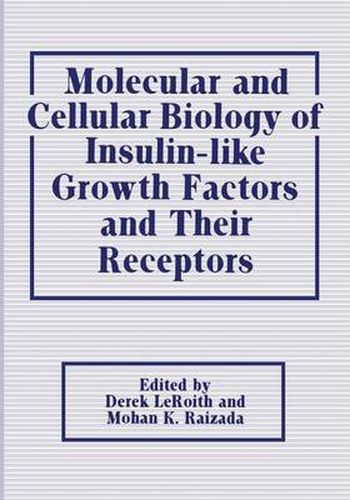Readings Newsletter
Become a Readings Member to make your shopping experience even easier.
Sign in or sign up for free!
You’re not far away from qualifying for FREE standard shipping within Australia
You’ve qualified for FREE standard shipping within Australia
The cart is loading…






This title is printed to order. This book may have been self-published. If so, we cannot guarantee the quality of the content. In the main most books will have gone through the editing process however some may not. We therefore suggest that you be aware of this before ordering this book. If in doubt check either the author or publisher’s details as we are unable to accept any returns unless they are faulty. Please contact us if you have any questions.
An essential element in the development and functional integrity of all organisms is intercellular communication. This is achieved by the secretion of soluble messenger molecules which subsequently interact with receptor-effector pathways in the responsive cells. Hormones are traditionally defined as chemical messengers synthesized by endocrine glands. Unlike hormones produced by endocrine glands, growth factors are hormone-related substances produced by many tissues and play an important role in controlling growth and development. While the exact physiological roles of growth factors have yet to be elucidated, they play important roles in the regulation of cellular proliferation and/or differentiation during ontogenesis, growth and differentiation. During recent years there has been a substantial increase in research related to peptide growth factors, their receptors, and modes of action. With the discovery and characterization of numerous growth factors, it became clear that these growth factors had multiple features in common with classic hormones as well as with oncogenes. Furthermore, there are distinct families of growth factors based either on structural or functional similarities.
$9.00 standard shipping within Australia
FREE standard shipping within Australia for orders over $100.00
Express & International shipping calculated at checkout
This title is printed to order. This book may have been self-published. If so, we cannot guarantee the quality of the content. In the main most books will have gone through the editing process however some may not. We therefore suggest that you be aware of this before ordering this book. If in doubt check either the author or publisher’s details as we are unable to accept any returns unless they are faulty. Please contact us if you have any questions.
An essential element in the development and functional integrity of all organisms is intercellular communication. This is achieved by the secretion of soluble messenger molecules which subsequently interact with receptor-effector pathways in the responsive cells. Hormones are traditionally defined as chemical messengers synthesized by endocrine glands. Unlike hormones produced by endocrine glands, growth factors are hormone-related substances produced by many tissues and play an important role in controlling growth and development. While the exact physiological roles of growth factors have yet to be elucidated, they play important roles in the regulation of cellular proliferation and/or differentiation during ontogenesis, growth and differentiation. During recent years there has been a substantial increase in research related to peptide growth factors, their receptors, and modes of action. With the discovery and characterization of numerous growth factors, it became clear that these growth factors had multiple features in common with classic hormones as well as with oncogenes. Furthermore, there are distinct families of growth factors based either on structural or functional similarities.